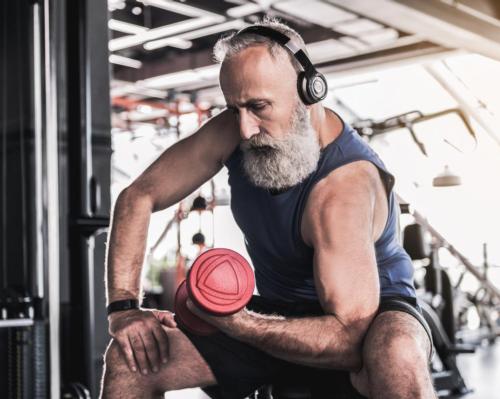29 Jun 2021
Operators should focus on 'ability rather than age' to get older people active
BY Tom Walker

Health clubs, gyms and leisure centres should focus on ability, rather than age, when designing, marketing and delivering activities to those aged 55 and over.
The insight comes from the Life In Our Years, a new report, carried out by the ukactive Research Institute in partnership with Egym, which is based on a consultation on the fitness and leisure sector for the over-55s.
According to the report, only 54 per cent of adults over the age of 55 complete the World Health Organization's recommended 150 minutes of moderate-intensity physical activity per week.
Just over a third (34 per cent) complete less than 30 minutes a week and are therefore classified as inactive.
The main themes to emerge from the consultation – which saw more than 100 adults aged 55 to 90 take part in focus groups – were: accessibility, atmosphere, the importance of social interaction, workforce engagement, promotion, the categorisation of programmes and class offerings, and long-term physical health support following the pandemic.
Based on the findings, ukactive has now produced nine recommendations for operators, designed to improve participation levels among older adults.
The nine recommendations are:
1. Make activity easy and accessible
2. Focus on strength as early as possible to maintain independence
3. Create and build an inclusive and welcoming atmosphere to increase likelihood of repeat usage and foster a sense of belonging and community
4. Make activity more social to incentivise people to come through your doors
5. Prepare the workforce to support health needs specific of the older adult through developing their interpersonal and communication skills and knowledge of common health conditions
6. Categorise activities by ability or intensity, not by age
7. Make communication and promotion clear to help build consumer confidence and help them make informed activity decisions
8. Consider the changed physical and mental health needs of older adults post-COVID-19
9. Build an evidence base to understand the impact the sector is having on older adults’ health and attract investment into the sector
Huw Edwards, ukactive CEO, said: “This important report shows that our sector has the opportunity to do more, fine-tuning the ways in which the industry targets, delivers, monitors and evaluates its programmes for older adults.
“Not only are there commercial opportunities to engage with a new audience, there are other opportunities to innovate to help those who are most vulnerable by linking to healthcare pathways.
“Increasing engagement with older adults offers our sector an opportunity to cement its reputation within government as an essential service, diversify its membership base and position itself as a socially-driven industry.
“The services offered by the fitness and leisure sector have never been more important and we will continue to support our members to provide more desirable services to older adults so they can live longer, healthier lives.
“We recognise there are some excellent programmes and practices in the sector already, which came across clearly in the consultation and focus group sessions, but now we must grasp the opportunity to improve our offer to those over 55."
Dr Matthew Wade, Head of Research and Development at ukactive, said: “This is the most comprehensive study to date across the fitness and leisure sector that explores not only what is being offered specifically to older adults, but more importantly, what is wanted.
“Research shows us that being physically active and undertaking strength training can help older adults live healthy and independent lives.
“By including older adults directly in this research, the findings provide us with the opportunity to help the fitness and leisure sector maintain, develop and improve their offer and satisfy the demand from older adults by providing the physical activity options that they want.”
To download your copy of the full report, click here.
Close Window